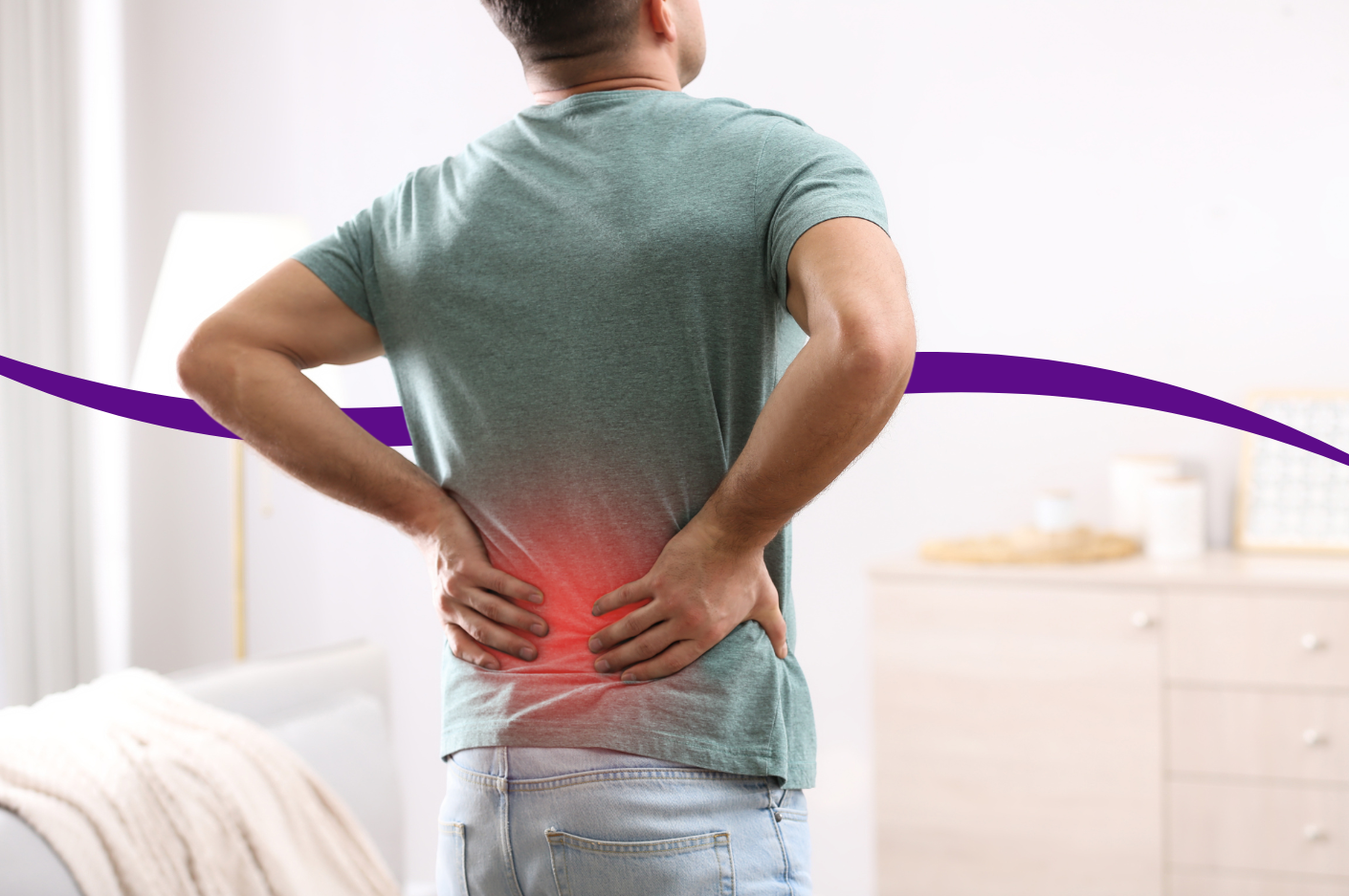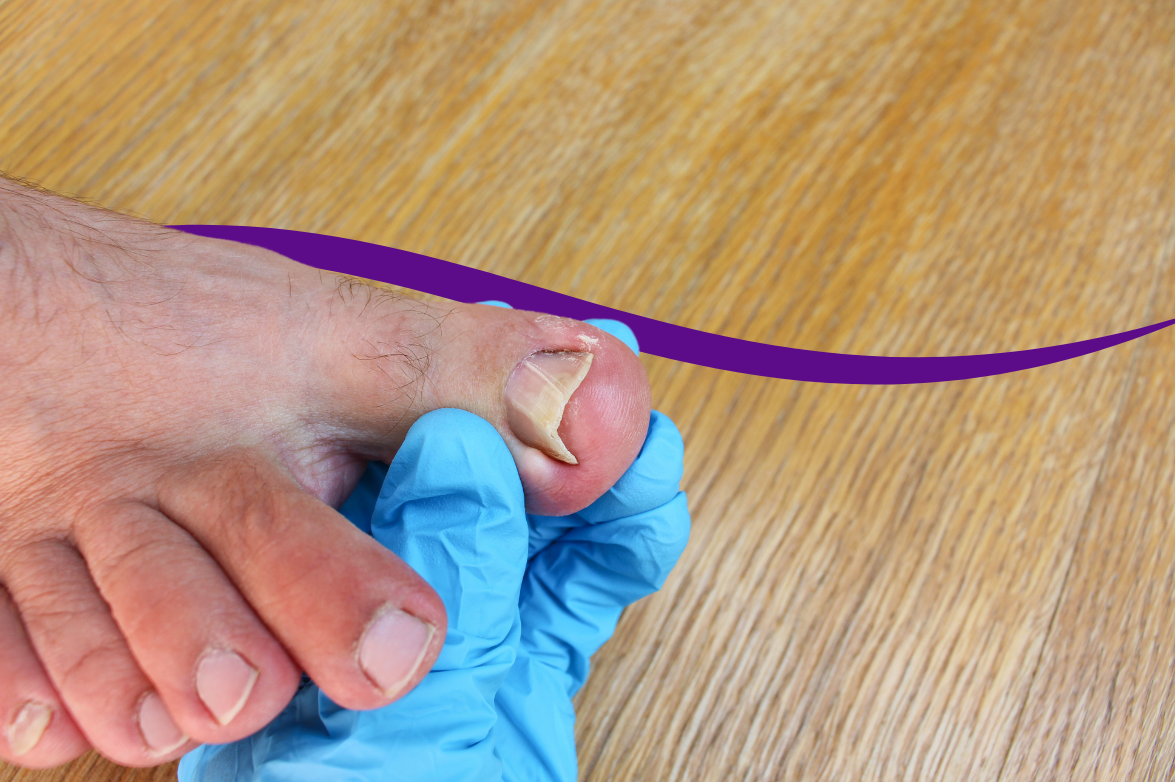

Ingrown toenails are notorious for being painful, uncomfortable and frustrating for our patients - and they can make wearing your favourite
shoes near impossible if they close in around the toes. Being one of the most common problems that our Brisbane podiatrists see and fix,
it’s not uncommon for us to see an ingrown toenail looking pink, swollen and almost like it’s peeling, after not having healed
for weeks - despite our patient having already finished a course of antibiotics.
Taking antibiotics as a treatment for ingrown toenails makes sense on the surface - after all, when we have redness, swelling and pain caused by an infection elsewhere in the body, often a course of antibiotics will help clear it up. So isn’t it the same for ingrown toenails?
Unfortunately, the answer is a resounding no - and it’s all to do with the cause of the ingrown toenail. Let us explain.
If you’re currently suffering from an ingrown toenail, this means that part of your toenail (down at the tender side) has actually pierced into the surrounding skin - much like a splinter - and is now growing into the skin. The longer it’s left in there, the deeper it will go as your toenail naturally continues to grow. And just like a splinter, when you walk or squeeze your toes into shoes, the pressure will likely cause you pain.
It’s a direct result of the nail piercing the skin that you begin experiencing your painful and uncomfortable symptoms - your body responds to having something ‘foreign’ in the toe by swelling in an attempt to heal the area, bringing with it the redness and tenderness. This is similar to when you have a bacterial infection in an open wound - which antibiotics would be perfect for in destroying the bacteria so that the body can heal. Except in this case, it’s not a bacterial infection that’s the cause of your issues - it’s that splinter-like nail spicule in the skin. And until that spicule is removed, no number of courses of antibiotics will fix the issue.
Of course, it’s very possible for ingrown toenails to also become infected - as with any open cut in your body, an ingrown toenail makes your toe vulnerable to infection, which is magnified given the location of your toe so close to the ground and dirt from floor surfaces. In these cases, antibiotics may be very well warranted - but again, they’ll only address the bacterial infection and won’t remove the nail spicule that’s keeping your wound open, swollen and sore.
The key lies in safely and effectively removing the nail spicule from the skin, being very careful not to leave any of the nail behind, given this is a common cause of ingrown nail pain (and much frustration). Our podiatrists offer several treatment options to make this easy and simple:
If this is your first ingrown toenail, your ingrown nail is relatively mild, or the cause of your ingrown toenail is something that is unlikely to cause you problems again, then we may recommend that we simply and easily remove the offending nail edge using our specialist podiatry instruments.
This is often completed within a few minutes, and while it is typically not very painful, you do have the option of numbing your toe with local anaesthetic. We use our tools to carefully trim down the side of your toenail, only removing the problematic part of the nail containing the nail spicule. Once removed, you’ll notice an instant reduction in pain and pressure, and you’ll also notice an immediate difference in pain when pressing on the side of your toe with your fingers. Your toe will likely need the rest of the day for the swelling to settle, the healing process to kick-start, and for the tenderness to resolve.
One of our options for conservative (non-surgical) ingrown toenail treatment is a fantastic device called the CombiPed brace. Combiped uses an adhesive wire where one side of the nail brace is gently hooked under the nail rim and the flat plastic pad is glued to the other side of the nail's surface of the ingrown toenail, promoting the natural, flatter growth of the nail. Due to its particularly flat shape and the lasting effect of the spring wire on the nail, the CombiPed corrective nail brace combines maximum comfort with optimal treatment results. We love that the brace:
If you’ve had recurring ingrown toenails, your ingrown nail is severe, you have complications like significant skin overgrowth on your nail, or the cause of your ingrown toenail is something that is likely to be a problem again in the future (like a bunion, toe deformity, your choice of footwear or nail cutting technique), then we may recommend a minor toenail surgery called a partial nail avulsion (PNA).
Don’t worry - this is a very common and routine procedure that our podiatrists perform daily. It is completed in your regular treatment chair with your podiatrist - but with a few extra precautions. PNA’s are performed under local anesthetic making every procedure painless.
Your podiatrist will use specialist sterilised surgical tools to remove a small section of your toenail, including the offending nail spicule. We then apply a chemical called phenol to target the nail-growing cells at the base of the nail - meaning this small section of nail is unlikely to grow back and continue to cause you problems in the future. This makes the procedure a permanent solution for ingrown toenails, which is much appreciated by our patients (aside from the odd case of regrowth where the body repairs the nail growing cells).
If your ingrown toenail is complicated by other issues, like notable damage to the nail itself such as nail thickening, disfiguration, a
severe fungal nail infection or other factors that are leaving you unhappy with your toenail, we’ll discuss the possibility of a total
nail avulsion. This is where the entire toenail is removed to allow the nail to ‘start from scratch’, growing a new and
(hopefully) healthy toenail to take its place that will give you far fewer problems. In this case, some of our patients also opt for a
matrixectomy, where the chemicals are applied to prevent the nail from regrowing entirely, ensuring they don’t have to deal with the
hassle in the future.
At our Brisbane clinics, we don’t want to just fix your ingrown toenail and relieve you of your symptoms - we want to help reduce the likelihood that you’ll have to continue putting up with the pain in the future. This is why a crucial part of your treatment, regardless of the treatment option you select, is also understanding the cause of your ingrown toenail, so we can help you put the right measures in place to prevent it. One important step is teaching you how to trim your toenails in the best way to minimise your ingrown nail risk, as well as looking at your footwear and the role that it may be playing too. This is often a common issue in adults who select inappropriate shoes and school-aged children, who tend to quickly outgrow their school shoes without telling mum and dad, leaving the toes buttressing against the end of the shoe.
Your ingrown toenails can also be triggered by foot deformities like bunions due to the way the big toe rotates. In bunions, the big toe deviates inward toward the other toes, causing misalignment of the nail and increased pressure on the surrounding nail sulcus. This heightened pressure can result in the toenail growing into the adjacent skin, leading to the development of ingrown toenails.
Although relatively rare, bony exostosis can also be a contributing factor to ingrown toenails. Bony exostosis refers to the formation of
bony outgrowths on the toe joints or the nail bed. When these bony protrusions exert pressure on the nail, it can disrupt its natural growth
pattern and cause it to grow abnormally into the surrounding skin. Both of these causes are something your podiatrist has great expertise
and experience in, to help you effectively fix your ingrown nail.
Having your ingrown toenails cared for by our podiatrists means:
Book your appointment with our podiatry team online
here
or call us on (07) 3356 3579.
| Monday | 7:40am - 6:00pm |
| Tuesday | 7:40am - 6:00pm |
| Wednesday | 7:40am - 6:00pm |
| Thursday |
7:40am - 6:00pm |
| Friday | TEMP CLOSED |
| Saturday | CLOSED |
| Sunday | CLOSED |
Ground Floor, 344 Queen Street,
Brisbane City QLD 4000
| Monday | 7:40am - 6:00pm |
| Tuesday | 7:40am - 6:00pm |
| Wednesday | 7:40am - 6:00pm |
| Thursday |
7:40am - 6:30pm |
| Friday | 7:40am - 5:00pm |
| Saturday | 7:40am - 4:30pm |
| Sunday | CLOSED |
Newmarket Village, 114/400 Newmarket Rd, Newmarket QLD 4051